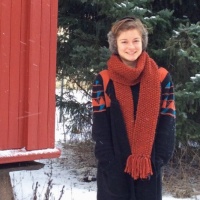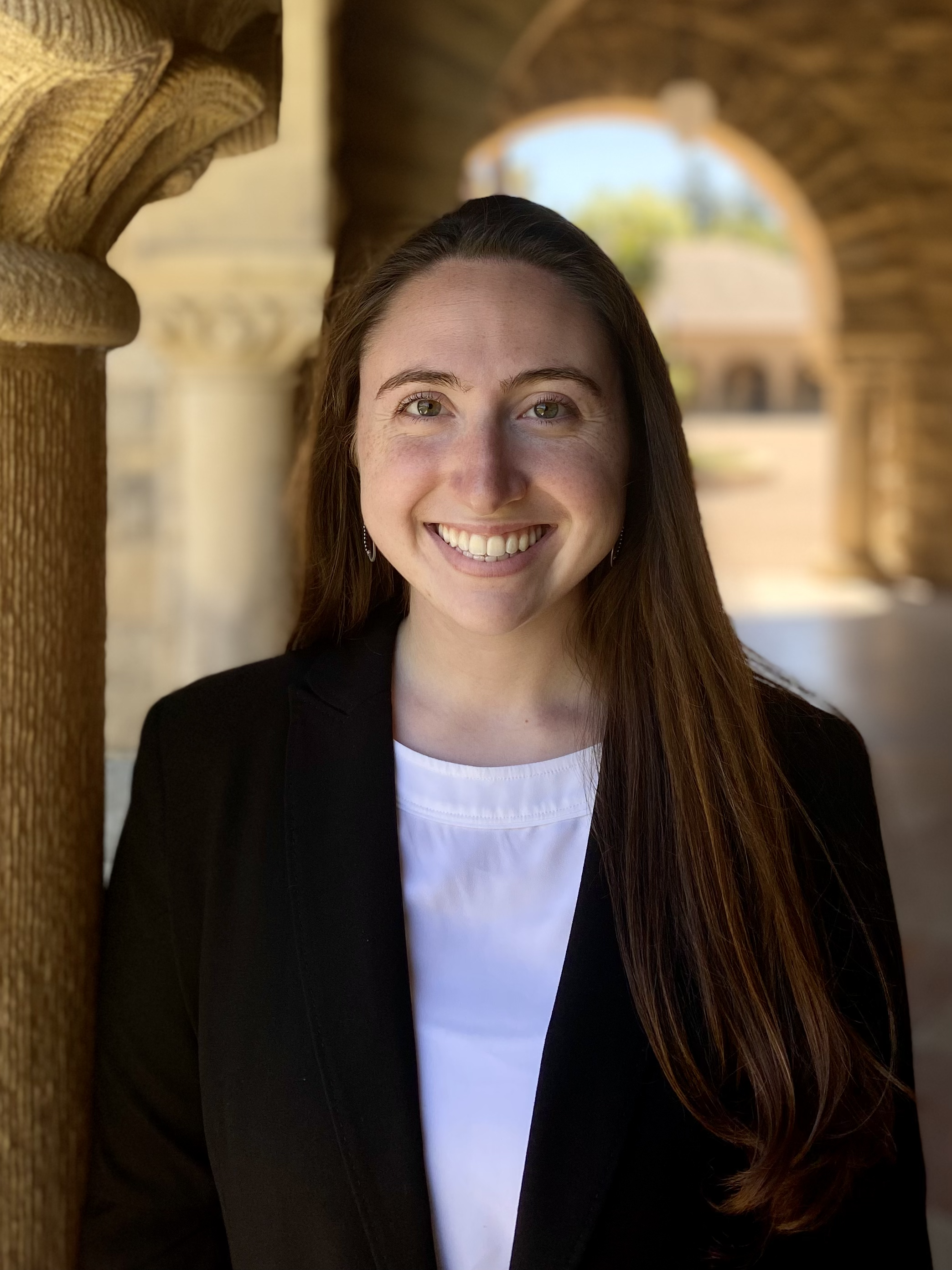This tenth of twelve portraits in 2017, honoring alumni from thirty years of Roth Foundation programs, features costume designer Haley Peterson. Check out her designs on her website!
In 2015, support from the Roth Foundation helped her create a costume for her thesis project for a Master’s degree at the Oslo National Academy of Arts. While in Norway, Haley designed costumes for opera and dance performances, attended “Critical Costume” lectures and—together with two other students—represented Norway at the 2015 Prague Quadrennial of Performance Design and Space. This month, Haley shares thoughts on her trajectory and craft with us:

Most students who are interested in a costume education go into theater departments; there aren’t really any programs that teach costume design as its own art/science or take an interdisciplinary approach to the subject. This is something I learned while looking for a program before college; it was either Fashion design with a course in theatrical costuming or Fiber art with a course in clothing. What I wanted to study was everything pertaining to costume design: human anatomy and drawing, dance, film, theater, construction and makeup, weaving, felting, dying, embroidery! So, although Arizona State University (ASU) offered a BA in Theater with a concentration in Costume Design, I decided to undertake their Individualized Focus in the Arts instead, searching through courses across departments to learn what I needed to research, understand, design, construct, dye and craft costumes.
After college, the Fulbright program enabled me to undertake an MA at the Oslo National Academy of the Arts, where I was able to study with the accomplished costume designer Christina Lindgren. My time at the Academy taught me a lot about what I think of as “Work ethic/Life ethic.” In the U.S we focus on hyper-production and entertainment; but in Norway I learned to focus on independent and authentic expression. It shaped me into an artist who waits, and listens, and is ok with stillness and silence. I pared down my thesis project, for example, going deep instead of wide: putting hours of work—and meaning—into the selection of wool fabrics and motifs for embroidery, endlessly testing dye plants and colors, and constructing everything by hand.

Raw materials—hair, oil, plant dye, wool, cotton, skin, food, rot, rust—are the only things separating us from becoming a silicon robot colony. These are the materials I love and am drawn to, over and over again. They make me feel real and human, in touch with my agricultural ancestors and the earth around me. Simple, really. People push me to use photoshop for my costume renderings, while I reach for recycled brown paper and charcoal—the materials I used to draw the designs for soot and spit. They talk about wearable technology, and I soak wool fabric in vinegar and wrap it around rusty computer hard drives. It’s a subtle rebellion.
Norway also reinforced my aversion to borders between disciplines. An exhibition is simply a mostly-still performance; a performance is a live exhibition. For my thesis, I decided to create a highly personalized, appropriated Norwegian costume integrating my own multinational identity (Turkish-American-Norwegian), and then wear it to participate in the Norwegian Independence Day parade. I was the craftsperson, performance artist, filmmaker, and exhibition designer in a staged foray, as an outsider, into Norwegian nationalism. I was both masquerading as a Norwegian and simultaneously revealing myself as “other,” and recording the event on analogue film allowed me to re-stage the performance with behind-the-scenes details, extending the performance into an exhibition. The costume sparked interesting conversations. A rather flirtatious older gentleman and folk-dance partner thought my aluminum brooches (made of tea-candle holders) were a hilarious and preposterous invention—couldn’t I find someone to lend me theirs? And one lady repeatedly tried to convince me to sew her one of these “very ancient looking” Bunad—to not wear a Bunad from your mother’s or father’s home region is considered a perversion by traditionalists.

The irony of this last comment becomes clear when you consider the costume in detail. Its shape is that of the popular and controversial “beltestakk.” This type of dress from the Telemark region became so popular that Norwegians from other regions began buying it, giving it a questionable reputation. I picked it as a model intending to place my self deeper into a narrative of non-linear heritage… and discovered a surprising likeness between the modern sports bra and the traditional Beltestakk bodice, which has a similar X-shaped back, helping support the shoulders and breasts and serving a similar function, keeping everything in place for a long day of farming or folk dancing. The pattern for the collar came from an Ottoman Turkish shoe I saw in a museum in Sweden; funny it had come all that way, like me. I picked reds and yellows and rusts and black—bold and powerful colors, all very Middle Eastern. I dyed the bodice with onion skins, the cracked pattern and orange color reminding me of the hot Arizona desert and burning sky. I wove a red belt, dyed with red cochineal dye, and green apron strings made of borrowed green yarns from a fellow natural dyer I met on my first day at the Academy. I embroidered the sleeves with stylized Ottoman tulips, a rage that swept Europe in the early 18th-century “Lale Devri” or “Tulip Era.” I acquired two rancid smelling bags of raw sheep wool from a Norwegian farm, and fashioned the wool into a border for the wide skirt, sewn from wool dyed black with pomegranate skins soaked in an iron pot for several months. The pomegranates I gleaned from trashcans outside the local store run by Turkish immigrants, the iron pot from a Norwegian flea market. The wool border garnered a few laughs from those who recognized my low-fashion, but essentially Norwegian choice on Independence Day!

It was not easy coming off of the high of my time in Norway. While still at ASU, I had designed costumes for the premiere of the play soot and spit, written by Charles Mee, Jr. and directed by Kim Weild. Last spring I worked on the re-staging of the play, when it opened in New York! The play is a fictional story about the autistic artist James Castle. Its inspiration came from Castle’s own world of gritty, unsophisticated beauty; using materials we might call dirt and trash, he patiently brought his world into view. The play starts in this material world; then, as it progresses, the influence of the playwright seeps in, with a series of imaginative, colorful and sometimes tormented characters from Castle’s mind. In my costumes, I united these worlds by studying Castle’s own methods. I used charcoal and recycled brown paper for my costume renderings, the earthy aesthetic helping me unify the seemingly paradoxical elements in the vivid carnival painted by Mee. As we began constructing the costumes at the ASU costume shop, we hand painted the floral prints for dresses, which might have been neatly block printed in Castle’s day, and we distorted plaid and polka dot patterns in the way that he visualized them in his own drawings. My biggest challenge was to create Castle’s “paper” people as life-sized cardboard costumes and masks, in which actors could still move nimbly; for this we had to add invisible fabric joints, straps, hidden peep holes, mouth holes and foam blocks, adjusting the awkward materials to human bodies. I learned two things from this: nothing is impossible with a great team of craftspeople; and a well-made, structurally demanding costume hugely enhances an actor’s performance and physical expression.
Since soot and spit ran in New York, I have been taking a hiatus from production to take stock of what I learned and how I changed during my time in Norway. I am so grateful for the support of Fulbright Norway and the Lois Roth Foundation—they allowed me to have an incomparable international experience and furthered my education and artistic growth in deep and unexpected ways. One thing that is clear is that these programs make an incredibly important contribution by giving people direct experience of each other’s ways of looking at life, which is key in our globalizing world.
__________________________________________
This text evolved from correspondence between Haley Peterson and Skyler Arndt-Briggs. Thanks to Drew Barnhart, our Media and Outreach Manager, for producing our October Portrait.

















